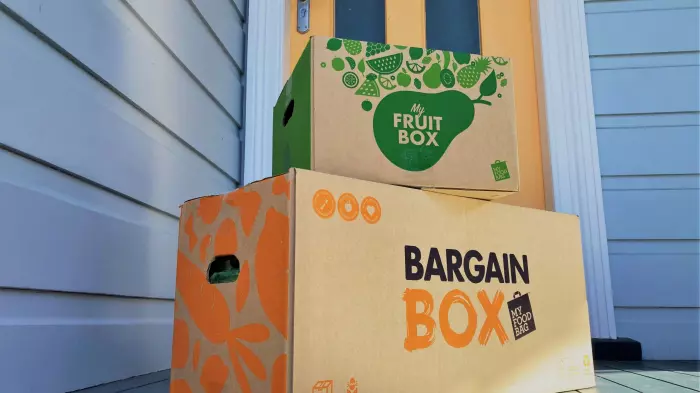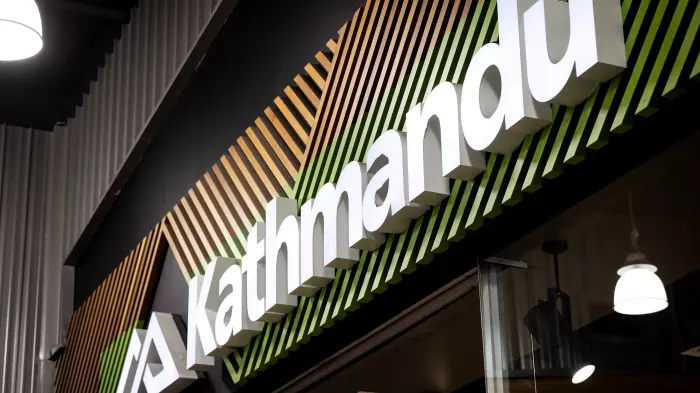South Port NZ Ltd - 2024 Meeting Presentations
MEETING
Thu, Oct 17 2024 03:57 pm
SOUTH PORT NZ LTD
2024 ANNUAL MEETING
Chair - Philip Cory-Wright
The year to 30 June 2024 was a difficult year operationally but a very important and positive year strategically for South Port.
Cargo volumes were down by 7.7% overall, across all major cargo categories, particularly forestry and agriculture. This reflected cargo volumes that were last seen in 2020. The core bulk cargo volumes were down by 12.2% at 2.67M tonnes. Normally we would expect South Port to benefit from its well-diversified cargo portfolio, but this year the downturn was reflected across the board. The one bright spot was the container business. Container volumes were up by 24.5% to 51,900 TEU, the second highest on record.
As expected for a relatively fixed cost business, this fed through into a lower profit. Normalised NPAT, excluding one-offs, was down by 13.4% (from $11.5M to $9.96M).
The Board therefore is pleased that we have maintained a steady dividend of 27.0 cents per share which represents a pay-out of 83% of free cash flow.
Strategically, the 2024 year was a very positive one for South Port. First, the Kia Whakaū harbour channel deepening programme was completed successfully. The draft was increased by a full metre to 9.7m chart datum – at a very modest cost of $13M. We were very pleased to be able to declare formally the new draft on 4 October.
The practical consequences of this new depth are many. It enables deeper draft vessels to enter Bluff Harbour. It enables fully loaded log ships to be able to depart, allowing greater use of “one-port calls” that forestry companies love because they are much lower cost. It enables visiting vessels to operate across a fuller range of tides. It provides greater safety margins.
Secondly, our key customer, New Zealand Aluminium Smelters (NZAS), announced a deal with several leading NZ electricity gentailers that will enable NZAS to operate for at least another 20 years. This included a demand-response option that provides New Zealand with a very significant cushion against electricity shortages caused by low hydro lake levels. The benefits of this new demand-response option were shown sooner than expected when Meridian Energy triggered it within four months of the NZAS extension being announced.
As NZAS represents a third of our cargo base this announcement also plays an important role in the commercial success of the Kia Whakaū project.
As previously advised, NZAS provides ~20% of South Port’s profit and also a long-term stable earnings flow from its lease of the Tiwai wharf out to 2043. NZAS is also a major contributor of activity and employment for the Southland region.
The NZAS decision is likely to provide flow on opportunities for the Port. Examples of this include the commitment by gentailers to build new renewable electricity generation in the Southland and Otago regions.
Immediately following on from the NZAS decision, Mercury NZ announced that it had reached final investment decision to proceed with stage two of the Kaiwera Downs wind farm. Stage two is much larger than stage one (32 turbines vs 10). Those turbines and other equipment will come through South Port over the coming 12-18 months providing a valuable new cargo for the Port. Other prospective wind farms which might be expected to come through the Port include Contact Energy’s Slopedown wind farm (50 turbines), Manawa/Pioneer’s Kaihiku (up to 73 turbines), and potentially Manawa’s Mahinerangi wind farm.
South Port is also hopeful that aquaculture projects will progress, including Ngāi Tahu’s Hananui ocean salmon farm, Impact Marine’s land-based Salmon farm, Sanford’s land based recirculating water hatchery and the Kelp Blue kelp farm.
This year we celebrate 30 years of being listed on the NZX. It is particularly pleasing that these positive opportunities reaffirm the potential for our regional port that was envisaged by local government and private investors when we listed in 1994.
CEO - Nigel Gear
I intend to expand further on our cargo flows in a little more detail, followed by commentary on H&S, climate related disclosures, the community and staff.
South Port is primarily a bulk port, which represents 83% of our cargo base with the balance containers 17%.
South Port’s cargo profile can be broken down further into three main sectors, 1/3 NZAS, 1/3 Forestry and 1/3 agricultural imports and exports.
As mentioned previously by the Chair bulk cargoes were down 12.2%. The main areas impacted were agricultural input volumes that decreased by 15%, driven by a slow-down predominantly in the red meat sector and also forestry which decreased by 26%. Both woodchip and log volumes were down due to soft offshore demand in both the Chinese and Japanese markets.
Containers volumes improved to levels similar to those we handled back in 2021 which was pleasing. The main increases were shown in agricultural export volumes increasing by 18% and manufactured export goods by 35%.
We are fortunate to have a long and successful commercial relationship with one of the world’s leading shipping lines, Mediterranean Shipping Company, that provides a weekly Wallaby service from Bluff to North Asia ports via Australia.
Health and Safety continues to be a key priority for South Port. We work in a complex environment both on water and onshore, interacting daily with large vessels and machinery in all weather conditions.
Our focus therefore is on critical risks, especially on people versus plant.
The Port health and safety leadership group, made up of port companies, stevedores, unions and regulators is working in partnership to develop better health and safety outcomes across the industry.
A recent piece of work completed by the leadership group is the approved code of practice for loading and unloading cargo on both ports and ships. This should help to standardise processes and set consistent guidelines for the industry to follow, improving safety outcomes.
South Port is a Climate Reporting Entity (CRE) under the new Aotearoa New Zealand Climate Standards which came into effect on 1 January 2023.
The new climate standards provide a consistent framework for entities to consider the climate-related risks and opportunities that climate change presents for their activities over the short, medium and long term. The climate-related disclosures cover four pillars being, governance, strategy, risk management, and metrics & targets.
The Company’s first mandatory reporting period under these new standards is for the year ended 30 June 2024. Our first report will be completed and published by 30 October 2024.
The Community that we work in is an important stakeholder of the Port and where 40% of our staff call home.
It is important therefore that we are active in the community whether through sponsorships, attending community board meetings, working with iwi or simply employees spending a day working in the Bluff surrounds.
Finally, we have an incredibly hard-working team at the Port and its only through their efforts that the Port manages to operate at a high level required to safely handle our regions export and import cargoes.
Outlook – Chair resumes
Offshore commodity markets especially the agricultural and forestry-based sectors, continue to face particularly challenging conditions which are expected to be reflected in the volumes of bulk cargo being handled through the Port.
Supply chains also continue to be disrupted, particularly around regions where conflict is present.
However strategic opportunities provide South Port with reasons to be optimistic about the future.
The NZAS 20-year extension provides consistency in vessel calls and base cargo that can now be factored into future planning. This decision will result in flow on opportunities like wind farm project cargoes that are expected to be handled through the Port in the coming years.
The government recently announced 149 projects selected for inclusion in the Fast-Track Approvals Bill. This list noted several aquaculture projects, three of which are in Murihiku including, the Hananui ocean Salmon Farm, the Impact Marine’s land-based Salmon Farm and the Sanford’s land-based recirculating water hatchery.
These opportunities and the diversity of cargoes handled through the port provide us with optimism and resilience for the future of the Port.
Based on all known factors at this time, South Port estimates that FY25 earnings will be in the range of $9.3M to $10.3M. On the assumption of a consistent earnings profile and in the absence of any unforeseen circumstances, the Directors will seek to, at least, maintain the current level of dividend payment.




